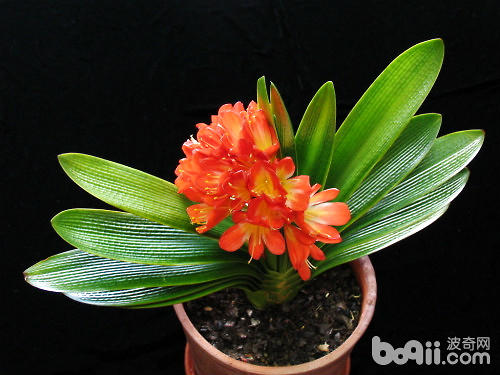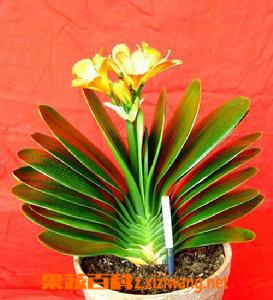Why don't magnolia blossom?
Why does the orchid not blossom? when it comes to the flowering age, the orchid cannot blossom normally, mainly for the following reasons:
① applied too much nitrogen fertilizer, less phosphorus and potassium fertilizer, and did not produce buds when the bud blossomed.
Excessive sunlight in summer in ② has an adverse effect on the flowering of pregnant buds.
③ is placed in a place with too high temperature in winter and can not get a good dormancy.
In order to make the orchid blossom year after year, the preparation of culture soil is the key. First of all, find some pig manure, bone meal, pine leaves, cinder, sawdust retting, disinfect with 0.3% potassium permanganate diluent, then take 3 portions of retting to make fertilizer, 1 part of pond mud or vegetable garden soil mixed into a basin, you can plant Magnolia. Usually pay attention to pouring liquid water of potassium dihydrogen phosphate once a month, and spray leaves with 0.1% potassium dihydrogen phosphate every month from October of each year to March of the following year.
Spraying 10: 30 ppm2,4-D 2 or 3 times a year during the growing period or the mixture of naphthylacetic acid and 2mai 4 Mel D can promote flowering. Summer is best placed in the morning and evening to see light, and around noon to avoid the strong sun shining in the shady place, in addition to watering the basin soil every day, but also should sprinkle water to the nearby ground. In winter, it should be placed in a slightly sunny place, winter taboo dry and cold, basin soil water content should be kept at about 60%, not too much water, the above is about why the orchid does not blossom.
Why doesn't the magnolia blossom?
Gentleman orchid (details), originated in Africa, because of its elegant and handsome plants, a gentleman's grace, flowers such as orchid, so named. As one of the flowers and plants, it is deeply loved by the public. However, many people find that their gentleman orchids do not blossom. What on earth is going on? Let the editor of Boqi net analyze why the gentleman orchid does not blossom.

The magnolia blossoms
The flowers of Magnolia are very beautiful and elegant, and most of them bloom from November to April of the following year. If there is a pot of magnolia full of flowers during the Spring Festival, the indoor atmosphere will be much more brilliant, but the magnolia is so delicate that it will not blossom if it is snubbed. If we want the orchid to blossom as scheduled, we must pay more attention to it. Family maintenance should mainly start from temperature, soil, moisture, light, nutrition and so on.
1. Light, temperature:
Autumn and winter is the period of bud differentiation of gentleman orchids, at this time, lack of light will be disadvantageous to flower bud differentiation. Gradually increase the light (bright scattered light) after the weather turns cool, but do not let the strong light shine directly. If you want the orchid to blossom, there should be enough temperature difference between day and night, which is about 25 ℃ during the day and 10-15 ℃ at night. Keep the temperature difference between day and night at about 10 ℃ for about a month, and then enter the house for protection and cultivation and the room temperature should not be too high. It is best at about 15 ℃, and then slightly increase to 20 ℃ or so during the Spring Festival.
2. Soil, nutrition:
Before flower bud differentiation, the amount of nitrogen fertilizer should be properly controlled, and fertilizers with high phosphorus content (such as bone meal, fish scales, etc.) should be applied 1-2 times to facilitate flowering. In addition, not changing the soil for a long time will also cause lack of nutrition, so it is necessary to change the soil and pour the basin. What I would like to remind you is that please do not fertilize a lot. Poor permeability of flower and soil, over-watering, over-fertilisation or long-term drought will cause root damage and may not blossom.
3. Moisture:
The cells in the plant of Cymbidium must contain a certain amount of water in order to carry out normal life activities, and the nutrients in the soil can only be absorbed by the root hair of Cymbidium after being dissolved by water, so it is necessary to water the plant reasonably to make the plant grow well. After entering the reproductive growth period, the normal flower bud differentiation and timely flowering. Too much or too little watering can cause rotten roots, causing plants to absorb malnutrition and not bloom. Please always pay attention to the dry and wet condition of the basin soil, once it is semi-dry, but the amount of water should not be too much, just keep the basin soil moist and not damp.
Why doesn't the magnolia blossom?
Although the gentleman orchid is a foliage plant, the gentleman orchid raised by the editor blossoms during the Spring Festival, and the flowers are beautiful, which are praised by people who come to pay New year's greetings, but if any, it reflects that their own gentleman orchids have not blossomed for several years. Why?
Although the orchid is mainly foliage, flowering still needs to be pursued. under normal circumstances, there are two rules to follow when it comes to flowering: one is that it has been planted for four years, and the other is that there are seven leaves on each side, with a total of 14 leaves.
If your orchid has been cultivated for four years, but there are less than 14 leaves, it means that there are still problems with maintenance. You can compare whether the following things have happened:
1. Excessive sunshine
Gentleman orchid avoid scorching sun exposure, summer direct sunlight will get sunburn, inhibit growth. It should be cultivated in a shady shed or in a semi-shady environment without direct sunlight from May to September every year.
2. Too high temperature and too dry environment
The suitable temperature of gentleman orchid is 15-25 degrees. If the temperature is too high, the air is too dry and the ventilation is not smooth, it can not grow normally or even suffer. The dry and hot weather should place the orchid in a cool, ventilated and humid place, and spray water to the leaves and the surrounding environment to reduce the temperature and increase humidity; before Frosts Descent, when the temperature dropped to about 10 degrees, you must enter the room. the indoor temperature should be kept at about 15 degrees to pass the winter safely.
3. Consolidation of basin soil
Gentleman orchid likes loose, breathable, good drainage, soil quality. If the soil is hardened and the drainage is not smooth, it will lead to rotting roots. It is best to buy special soil for planting. The special soil of Cymbidium is rotten leaf soil, which is very suitable for the growth of Cymbidium.
4. Lack of fertilizer
Although the gentleman orchid does not like fertilizer very much, it will not grow well and cannot blossom if it is short of fertilizer. Mature organic fertilizer should be used as base fertilizer when planting. You can also use a handful of sunflower seeds evenly applied around the pot soil without touching the roots to slowly release fertilizer for absorption by Magnolia. In the peak growing season, more phosphorus and potassium fertilizer should be applied every ten days or so for 3 or 4 times. In winter, potassium dihydrogen phosphate can be sprinkled around the surface of the basin soil to promote bud growth and flowering. If too much nitrogen fertilizer is applied, although the leaves are very green, they cannot blossom.
5. Improper daily management
Gentleman orchids should be taken care of carefully, and the soil should not be watered too much every spring, and watering should be controlled even more in summer; attention should be paid to leaf cleanliness to promote photosynthesis, which is conducive to bud cultivation and flowering, and leaves can often be wiped gently with soft cloth with tea water to keep the leaves shiny and shiny. When changing soil, the root system should be carefully straightened out and opened, so that it can be fully extended, which can promote the formation; the basin should not be too large, the texture should be deeper mud basin, purple sand basin is OK, and porcelain basin should be avoided.
If the gentleman orchid can pay attention to the above points, it will surely blossom year after year.
- Prev

How to deal with the rotten root of the gentleman orchid?
How to deal with the rotten roots of Cymbidium, Cymbidium is a succulent root plant, if the environmental conditions are poor or improper maintenance, often cause root rot. In general, the seedlings often rot below the base of the leaves, and the adult plants rot below the middle of the roots. There are many reasons for the rotten roots of Cymbidium, the main reasons are: improper fertilization of ①.
- Next

How to prevent chrysanthemum leaves from yellowing and falling off?
Yellow leaves and defoliation often occur in the growth process of chrysanthemum, which is mainly caused by insufficient fertilizer and water, slow plant growth, too wet basin soil, excessive fertilization, splashing fertilizer on the leaves and contaminating the leaves, as well as the invasion of diseases and insect pests. In order to prevent yellow leaves and defoliation of chrysanthemum, we should pay attention to the following aspects: first
Related
- Fuxing push coffee new agricultural production and marketing class: lack of small-scale processing plants
- Jujube rice field leisure farm deep ploughing Yilan for five years to create a space for organic food and play
- Nongyu Farm-A trial of organic papaya for brave women with advanced technology
- Four points for attention in the prevention and control of diseases and insect pests of edible fungi
- How to add nutrient solution to Edible Fungi
- Is there any good way to control edible fungus mites?
- Open Inoculation Technology of Edible Fungi
- Is there any clever way to use fertilizer for edible fungus in winter?
- What agents are used to kill the pathogens of edible fungi in the mushroom shed?
- Rapid drying of Edible Fungi

